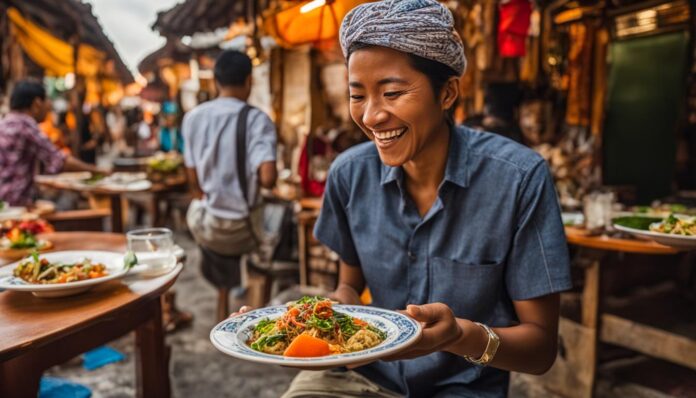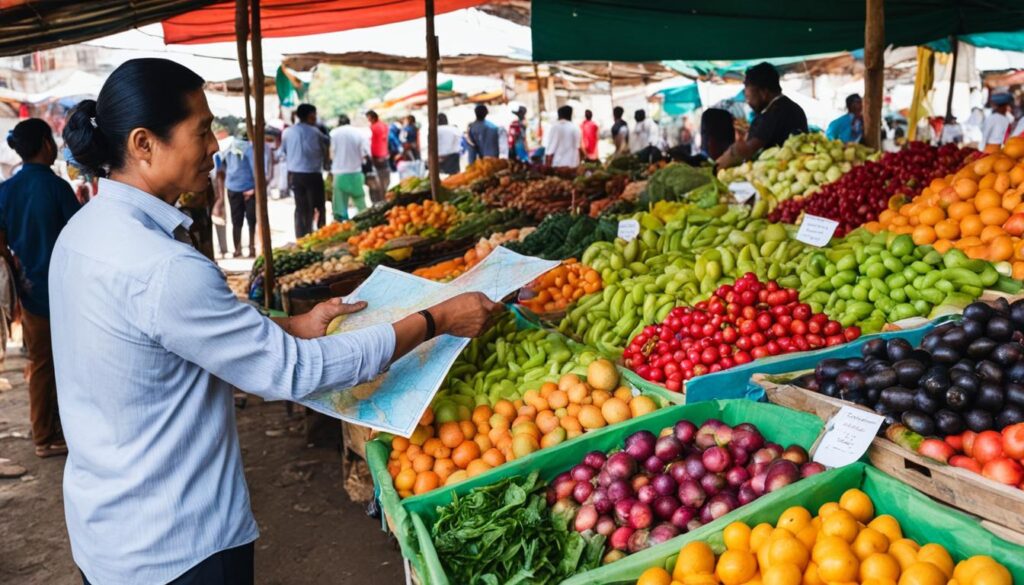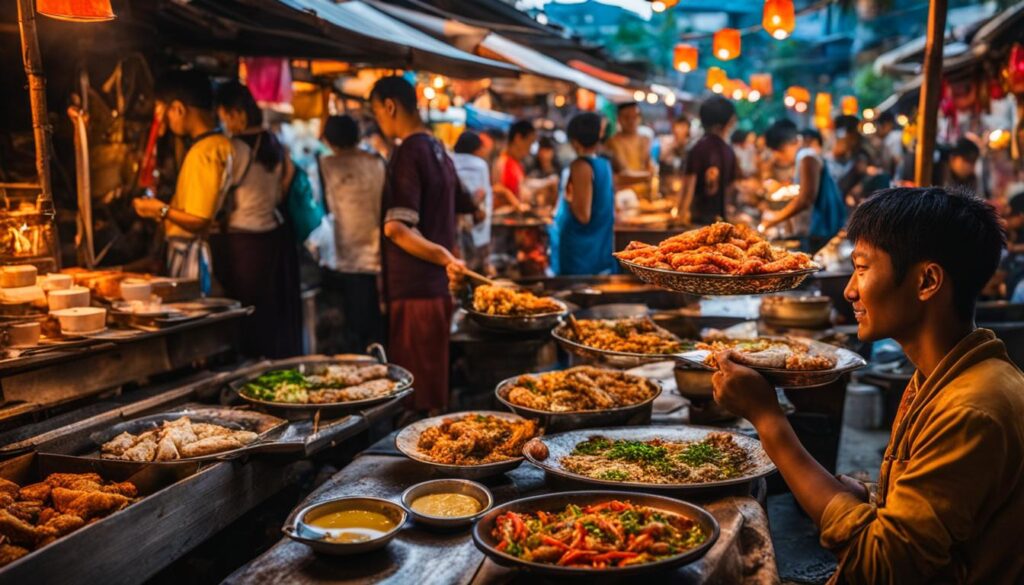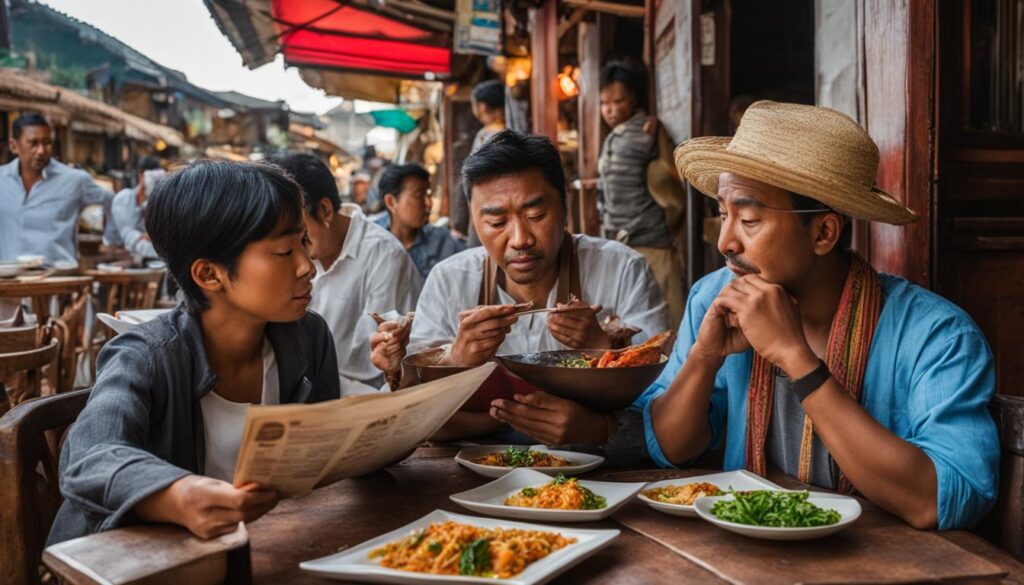If you are someone who loves to travel, you probably enjoy trying new foods. But how can you incorporate local cuisine into your diet without compromising your health? The answer lies in adapting your diet to local food while traveling.
Exploring native dishes and ingredients can make your trip a memorable culinary adventure. From fresh fruits and vegetables to local protein sources, there are plenty of ways to adjust your diet without sacrificing taste or nutrition.
In this article, we’ll provide you with practical tips on how to adapt your diet to local food while traveling. Whether you’re on a business trip or a leisurely vacation, you can stay healthy with local food adaptation and make the most of your travel experience.
Research Local Cuisine and Ingredients
Adapting your diet to local food while traveling can be challenging, especially when it comes to unfamiliar ingredients and dishes. However, you can make the task easier by researching the local cuisine and familiarizing yourself with the ingredients commonly used. This knowledge will help you make informed choices and find suitable options that align with your dietary preferences and restrictions.
When researching local cuisine, consider the following:
| Cuisine | Ingredients | Dishes |
|---|---|---|
| Italian | Olive oil, tomatoes, parmesan cheese | Pasta, pizza, bruschetta |
| Indian | Curry powder, lentils, coconut milk | Chicken tikka masala, chana masala, samosas |
| Thai | Coconut milk, lemongrass, fish sauce | Tom yum soup, pad thai, green curry |
Remember to take note of the common ingredients and dishes and how they are prepared and cooked. This information will help you communicate your dietary needs effectively and make informed choices when ordering food.
Embrace Fresh Fruits and Vegetables
When you are traveling, incorporating fresh fruits and vegetables into your meals is an ideal way to maintain a healthy diet. Local cuisines commonly involve these nutritious ingredients, and they are often available in abundance. Enhance your culinary experience and nutrition by trying out the local fruits and vegetables.
The key to embracing these fresh produce is to have an open mind and experiment with different flavors and cooking methods. Have salads, sandwiches, smoothies, or juices that include the local fruits and vegetables as part of a balanced meal.
In addition to exploring the local markets and grocery stores for fresh produce, you can also seek out farmers’ markets that allow you to buy directly from the source for a more sustainable and eco-friendly option. Sampling the locally grown fruits and vegetables is a great way to discover the unique flavors and vibrant colors of the region.
If you are not familiar with the local produce, ask the locals for recommendations or tips on how to prepare them. Opt for raw varieties, as cooking techniques can often load them with extra fats and preservatives. By embracing fresh fruits and vegetables while traveling, you can enjoy the flavors of the region while maintaining a healthy diet.
Opt for Local Protein Sources
When it comes to maintaining a balanced diet, protein is an essential nutrient. While it may be tempting to rely on imported protein sources while traveling, exploring local options can provide a unique and flavorful experience. Some local protein sources you may encounter include seafood, poultry, and plant-based alternatives.
| Local Protein Sources | Benefits |
|---|---|
| Seafood | Rich in omega-3 fatty acids and minerals |
| Poultry | Lean source of protein |
| Plant-based alternatives | May offer additional health benefits and be more environmentally sustainable |
Local protein sources not only benefit your overall health but also help support the local community. To enhance your culinary adventure, try incorporating different protein sources into your meals throughout your travels.
Tip: If you have dietary restrictions or preferences, be sure to communicate them clearly when ordering or purchasing food.
Choose Whole Grains and Legumes
When traveling, it can be easy to fall into the trap of indulging in rich and unhealthy foods. However, incorporating whole grains and legumes into your diet while exploring local cuisines can provide essential nutrients and fiber, keeping you satiated and energized. Not only that, but whole grains and legumes are typically major components of many regional dishes, making them a perfect choice for those looking to adjust their eating habits to local cuisine.
Whole grains that you may encounter while traveling include brown rice, oats, and quinoa. These grains can be prepared in a variety of ways and used as a base for dishes such as salads, stir-fries, and soups. Legumes like lentils, chickpeas, and black beans are also popular choices in many cultures and can be added to dishes as a protein source or used to make dips and spreads.
Choosing whole grains and legumes is a great way to travel diet customization on your journey. Incorporating them into meals provides a healthy and sustainable source of energy, helping you stay fueled for your adventures.
Be Mindful of Portion Sizes
One of the most significant challenges of adapting your diet while traveling is controlling portion sizes. Different cultures may have varying ideas of what constitutes a serving size, and it’s easy to overindulge when trying new and exciting dishes. However, being mindful of your portion sizes can help you maintain a healthy balance while still indulging in local cuisines.
Here are some tips for managing your portion sizes:
- Share meals with a travel companion
- Order smaller portions or appetizers
- Ask for a to-go box and save half for later
- Avoid buffets or all-you-can-eat establishments
By controlling your portion sizes, you can still enjoy the local delicacies while staying healthy and maintaining a balanced diet.
Communicate Your Dietary Needs
While traveling, dining out or staying in accommodations with provided meals can be exciting, but it’s crucial to communicate your dietary needs clearly to ensure that your meals can be customized or alternative options can be provided.
Some restaurants or food establishments may not fully understand specific dietary restrictions, which could lead to inadvertent consumption of a prohibited type of food. Hence, it’s essential to communicate your needs during ordering. Also, it’s important to mention any food allergies or intolerances to avoid any unwanted side effects.
In some cases, the language barrier may make it difficult to communicate your needs effectively. In such situations, use translation tools or learn some basic food-related phrases in the local language. This will enable you to convey your preferences clearly and identify ingredients better when ordering.
It’s also advisable to discuss your dietary needs with accommodation facilities before you book your stay. This can help you avoid the frustration of unsuitable meals or complications during your stay. Information on dietary needs can be relayed via email, phone, or through the booking platform.
By communicating your dietary needs clearly, you can ensure that your travel diet is customized to meet your specific requirements while enjoying local cuisine.
Learn Basic Local Phrases
When visiting a new place, you might encounter dishes or ingredients that you’re not familiar with. One way to navigate this is by learning some basic local phrases related to food and dietary restrictions. By doing so, it allows you to communicate your preferences and identify potential hidden ingredients in dishes. Here are some essential phrases to learn while adapting your diet to local food:
| Dialect | Phrase | Translation |
|---|---|---|
| Mexican Spanish | No me gusta picante | I don’t like spicy |
| Japanese | Watashi wa bejitarian desu | I am a vegetarian |
| Italian | Sono intollerante al lattosio | I am lactose intolerant |
| Thai | Mai sai kung | No peanuts |
Learning these basic phrases can go a long way in ensuring you stay healthy and comfortable while adapting to local cuisine.
Explore Local Markets and Grocery Stores
While traveling, exploring local markets and grocery stores can be a rich source of new culinary experiences. Not only can you find fresh, local ingredients that make adapting your diet to local cuisine easier, but you may also discover new flavors and ingredients you’ve never encountered before.
To make the most of local markets and grocery stores, start by identifying locations in the areas you’ll be visiting. Ask locals or do a quick online search to find out which markets and stores are popular for local produce and ingredients.
When you visit these markets and stores, take the time to explore and ask questions. Look for signage or speak to vendors to identify fresh, local produce. You may also find locally made products such as honey, jams, or sauces that will add unique flavors to your meals.
Tip: Use these markets and stores to stock up on snacks and other items for when you’re on-the-go. You’ll have easy access to healthier options than you may find in convenience stores or vending machines.
Navigating Local Markets and Stores
If you’re in a foreign country, you may encounter language barriers when navigating local markets and grocery stores. Consider using translation apps or studying basic phrases before you go so you can communicate with vendors and navigate the markets with ease.
You may also want to familiarize yourself with local customs and shopping etiquette. For example, in some cultures, haggling over prices is expected, while in others, it’s considered rude. Doing a little research beforehand can help you navigate these situations with ease.
Local Markets and Stores Table
| Location Name | Specialties | Additional Information |
|---|---|---|
| Pike Place Market Seattle, WA |
Fresh seafood, artisanal cheeses, local produce, and handmade crafts | Open-air market with over 500 vendors. Weekends are busiest. |
| Borough Market London, UK |
A wide range of international cuisine, including French patisserie, Spanish tapas, and Indian street food | Onsite cooking demonstrations and tasting events. Closed on Sundays. |
| Tsukiji Fish Market Tokyo, Japan |
Fresh seafood, including sushi-grade tuna and uni | Open early in the morning. Visitors may need to arrive before 5 am to see the live tuna auctions. |
Prepare Your Own Meals
If you’re looking to have more control over what you eat, preparing your own meals is a great option. This is particularly useful if you have specific dietary needs or restrictions and want to ensure that the food you’re consuming is suitable for you. Plus, cooking for yourself with local ingredients can be a fun way to immerse yourself in the local culture and try new flavors.
When you’re traveling, finding ingredients for your meals can be a bit tricky. To make things easier, look for local markets and grocery stores where you can find fresh produce and local ingredients. Ask locals for recommendations on where to go and what ingredients to look for. And don’t be afraid to experiment with new recipes!
If you’re staying in accommodations with a kitchenette, take advantage of this amenity and cook your own meals. This not only allows you to customize your meals to your liking but also saves you money compared to dining out for every meal.
Here are a few recipe ideas to get you started:
| Recipe | Description |
|---|---|
| Caprese Salad | A simple yet delicious salad made with ripe tomatoes, fresh mozzarella, and basil. Drizzle with olive oil and balsamic vinegar for extra flavor. |
| Vegetable Stir-Fry | Sauté your favorite veggies, like bell peppers, broccoli, and onions, in a pan with oil. Add protein like tofu or shrimp, and season with soy sauce, ginger, and garlic for a flavorful stir-fry. |
| Tomato and Basil Pasta | Cook pasta according to package instructions. In a separate pan, sauté chopped garlic and tomatoes in olive oil. Add fresh basil, salt, and pepper to taste, and toss with cooked pasta. |
Preparing your own meals is just one way to incorporate local food into your diet while traveling. With a little creativity, you can enjoy delicious and healthy meals that reflect the unique flavors of the regions you visit.
Stay Hydrated and Mindful of Hygiene
Adjusting your eating habits to local cuisine while traveling is an exciting adventure, but it’s essential to stay healthy and hydrated. Dehydration can lead to fatigue and other health issues, so make sure to drink plenty of water and fluids while exploring new places.
It’s also crucial to practice good hygiene when it comes to food handling and consumption. Always wash your hands with soap and water before eating, and avoid touching your face or mouth to prevent the spread of germs. When dining out, ensure that the restaurant follows proper food safety protocols, such as keeping dishes at the right temperature and using clean utensils and surfaces.
By staying hydrated and mindful of hygiene, you can enjoy the local cuisine while reducing the risk of falling ill. So, keep these tips in mind on your culinary travels!
Conclusion
In conclusion, adapting your diet to local food while traveling can be a fun and enjoyable experience. By following the tips we’ve provided, such as researching local cuisine and ingredients, embracing fresh fruits and vegetables, choosing local protein sources, and being mindful of portion sizes, you can maintain a balanced diet while indulging in the local flavors.
Remember to communicate your dietary needs clearly, learn basic local phrases related to food and dietary restrictions, explore local markets and grocery stores, and prepare your own meals if possible. These strategies will not only help you stay healthy while on the road, but also allow you to fully immerse yourself in the local culture.
Finally, always stay hydrated and mindful of food hygiene practices. With these tips in mind, you can enjoy the culinary adventures that await you on your next trip!

















































